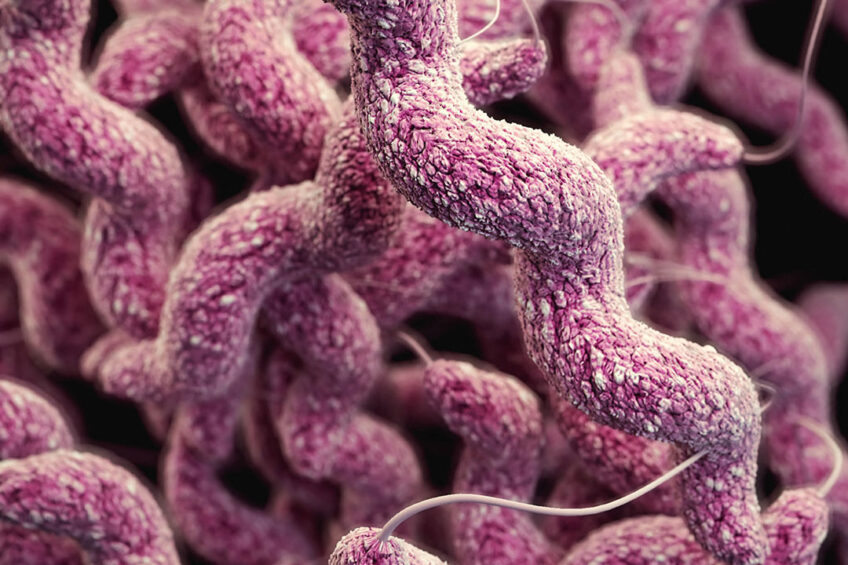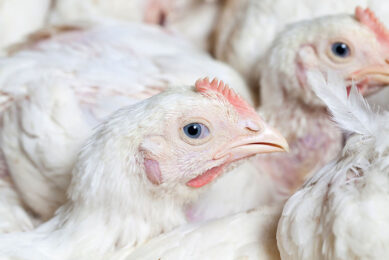Genetic determinants that help Campylobacter survive poultry processing

Research into how Campylobacter jejuni survives during poultry processing has found that mutation of a specific gene significantly reduced aerobic, refrigerated survival of the bacteria.
C. jejuni is a leading cause of bacterial-derived gastroenteritis in the US due to its ability to asymptomatically reside within the intestinal tracts of poultry. During processing, the bacterium can be released from birds and contaminate the meat where, despite the efforts of processors and grocers, it can survive and remain infectious for extended periods of time. Consumers can then be infected by C. jejuni after eating undercooked, contaminated food.
There has been ongoing surprise that the bacteria can survive this process as it does not thrive under processing and storage conditions and is sensitive to atmospheric levels of oxygen, which can reduce cell viability.
The study, led by Dr Jeremiah Johnson at the Department of Microbiology at the University of Tennessee and commissioned by the US Poultry Foundation, had a number of objectives:
- To construct defined C. jejuni mutants and confirm they do not survive aerobic and/or refrigerated conditions.
- Examine defined C. jejuni mutant survival on chicken meat stored under retail conditions.
- Determined whether defined C. jejuni mutants colonise chickens as readily as the parental strain.
Researchers previously screened approximately 8,500 transposon mutants for their ability to survive up to 2 days under aerobic, refrigerated temperatures and qualitatively determined that 155 mutants exhibited <5% survival. Those mutants were prioritised based on the extent to which they were impacted, and the experiment was repeated 3 times.
Survival under aerobic, refrigerated conditions
It was determined that 11 transposon mutants were reproducibly decreased for survival under aerobic, refrigerated conditions. For several of these mutants, the disrupted gene was identified using whole genome sequencing. 7 mutants were constructed of the different candidate genes and repeated the survival studies, finding that each reproducibility exhibited decreased survival when compared to the parental strain.
Retail chicken breast meat was purchased from a local grocer and divided into 1cm cubes and individually inoculated with 7 C. jejuni mutants and the parental strain. The inoculated chicken cubes were stored for up to 5 days at aerobic, refrigerated temperatures and the number of viable bacteria were enumerated every day throughout the experiment on selective media. The experiment was conducted a minimum of 3 times for each of the mutants. Due to relatively high variability in survival among the 7 strains on chicken meat, researchers were only able to determine that mutation of a specific gene significantly reduced aerobic, refrigerated survival.
White leghorn chickens were hatched in-house and inoculated with either the parental strain or a combination of both strains at a 1:1 ratio on the day of hatch. These infected chicks were housed for 7 days, euthanised and their caecal contents harvested. The number of viable C. jejuni with ceca of these birds was enumerated using selective media, which found that the specific mutant strain is unable to colonise the chicken cecum.
This was supported by the observation that chicks infected with both strains ended up colonised with only parental C. jejuni.
Join 31,000+ subscribers
Subscribe to our newsletter to stay updated about all the need-to-know content in the poultry sector, three times a week. Beheer
Beheer











 WP Admin
WP Admin  Bewerk bericht
Bewerk bericht